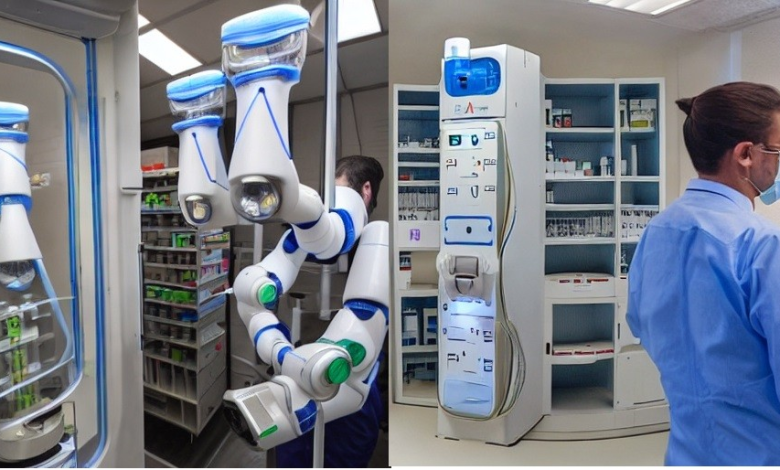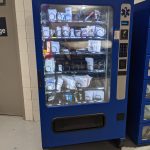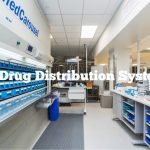How Automatic Pharmacy Dispensers Work: Revolutionizing Medication Safety and Efficiency

The healthcare industry has witnessed significant advancements in technology over the years, with one of the most remarkable innovations being the automatic pharmacy dispenser. These sophisticated machines have transformed the way medications are dispensed, enhancing efficiency, accuracy, and safety in pharmacies and healthcare facilities worldwide.
In this comprehensive article, we will delve into the intricacies of how automatic pharmacy dispensers work, their benefits, and their impact on medication safety.
The Evolution of Pharmacy Dispensing
Before diving into the workings of automatic pharmacy dispensers, it’s essential to understand the context of their evolution. Traditional pharmacy dispensing involved manual processes where pharmacists would prepare, count, and package medications by hand. While this method was effective, it was also time-consuming and prone to human error. The advent of automatic pharmacy dispensers marked a significant shift towards automation, streamlining the dispensing process and minimizing the risk of errors.
Components of Automatic Pharmacy Dispensers
Automatic pharmacy dispensers are complex systems comprising several key components that work together seamlessly to ensure accurate and efficient medication dispensing. These components include:
1. Medication Storage Units
Automatic pharmacy dispensers are equipped with secure storage units that house various medications. These units are designed to maintain optimal conditions, such as temperature and humidity, to preserve the integrity of the medications. The storage units are organized into compartments or bins, each assigned a specific medication type or dosage.
2. Robotic Arms and Dispensing Mechanisms
The heart of an automatic pharmacy dispenser lies in its robotic arms and dispensing mechanisms. These robotic arms are programmed to retrieve medications from the storage units and deliver them to the dispensing area. Advanced sensors and precision controls ensure that the correct medication and dosage are selected every time.
3. Automated Counting and Packaging Systems
Automatic pharmacy dispensers are equipped with automated counting and packaging systems that accurately measure and package medications. These systems use sophisticated algorithms to count tablets or capsules and place them into appropriate containers, such as blister packs, bottles, or pouches. The packaging process is carefully monitored to prevent any mix-ups or contamination.
4. User Interface and Software
The user interface and software play a crucial role in the operation of automatic pharmacy dispensers. Pharmacists and healthcare professionals use the interface to input prescription information, patient details, and other relevant data. The software then processes this information and coordinates the dispensing process, ensuring that the right medication is dispensed to the right patient at the right time.
5. Barcode Scanners and Verification Systems
To enhance accuracy and prevent medication errors, automatic pharmacy dispensers are equipped with barcode scanners and verification systems. Each medication is assigned a unique barcode that is scanned and verified before dispensing. This step ensures that the medication matches the prescription and patient information, reducing the risk of errors.
The Dispensing Process
Understanding the components is just the beginning; it’s essential to grasp how these elements work together in the dispensing process. Here’s a step-by-step overview of how automatic pharmacy dispensers operate:
1. Prescription Input
The process begins when a pharmacist or healthcare professional inputs a patient’s prescription into the system. This can be done through a computer terminal or a mobile device connected to the dispenser’s software. The prescription details include the medication name, dosage, quantity, and patient information.
2. Medication Selection
Once the prescription is entered, the software identifies the appropriate medication and dosage. The robotic arms are activated to retrieve the medication from the storage units. Advanced sensors and cameras ensure precise selection, even for medications stored in different forms, such as tablets, capsules, or liquids.
3. Counting and Packaging
The selected medication is then transported to the automated counting and packaging system. The system counts the exact number of tablets or capsules required for the prescription and packages them into the designated container. For liquid medications, the system measures and dispenses the correct volume into a bottle.
4. Barcode Scanning and Verification
Before the medication is released, it undergoes a thorough verification process. Barcode scanners read the medication’s barcode and cross-reference it with the prescription details. If there is a match, the medication is approved for dispensing. If there is a discrepancy, the system alerts the pharmacist for further verification.
5. Labeling and Dispensing
Once verified, the medication is labeled with essential information, including the patient’s name, medication name, dosage instructions, and any additional warnings or precautions. The labeled medication is then dispensed to the pharmacist or directly to the patient, depending on the setup of the pharmacy or healthcare facility.
Benefits of Automatic Pharmacy Dispensers
The adoption of automatic pharmacy dispensers offers a multitude of benefits, revolutionizing the way medications are dispensed and enhancing overall healthcare delivery. Some of the key advantages include:
1. Enhanced Accuracy and Safety
Automatic pharmacy dispensers significantly reduce the risk of medication errors, which can have severe consequences for patients. The precision of robotic arms, automated counting systems, and barcode verification ensures that the right medication is dispensed in the correct dosage, minimizing the potential for human error.
2. Improved Efficiency and Workflow
Automation streamlines the dispensing process, allowing pharmacists to focus on more critical tasks, such as patient counseling and medication management. The time saved by using automatic dispensers translates into increased productivity and improved patient care.
3. Reduced Medication Waste
Automatic pharmacy dispensers help reduce medication waste by accurately measuring and dispensing the required quantities. This is particularly important for expensive or controlled medications, where precise dosages are crucial for both cost-effectiveness and patient safety.
4. Enhanced Inventory Management
The software integrated into automatic pharmacy dispensers provides real-time inventory management, allowing pharmacies to track medication stock levels, expiration dates, and usage patterns. This data helps optimize inventory control, reduce stockouts, and minimize the risk of dispensing expired medications.
5. Improved Patient Experience
Patients benefit from the accuracy and efficiency of automatic pharmacy dispensers through reduced waiting times and fewer medication errors. The streamlined process ensures that patients receive their medications promptly and accurately, enhancing their overall experience and satisfaction with healthcare services.
Impact on Medication Safety
The introduction of automatic pharmacy dispensers has had a profound impact on medication safety, addressing several critical issues in traditional dispensing methods:
1. Error Reduction
Medication errors, such as dispensing the wrong medication or incorrect dosage, are a significant concern in healthcare. Automatic pharmacy dispensers mitigate these risks by eliminating manual processes prone to human error. The accuracy of robotic arms, barcode scanning, and verification systems ensures that medications are dispensed correctly, reducing the likelihood of errors.
2. Controlled Substances Management
The handling and dispensing of controlled substances require strict adherence to regulatory guidelines. Automatic pharmacy dispensers provide enhanced security and accountability for controlled medications. Access to these substances is restricted to authorized personnel, and every transaction is recorded, ensuring compliance with regulations and reducing the risk of diversion.
3. Consistency in Medication Preparation
Consistency is vital in medication preparation, especially for compounded medications or customized dosages. Automatic pharmacy dispensers ensure that each dose is prepared with the same precision and accuracy, eliminating variations that can occur with manual preparation.
4. Traceability and Documentation
Automatic pharmacy dispensers maintain detailed records of every dispensing transaction, including the medication dispensed, dosage, patient information, and date and time. This traceability is crucial for auditing, tracking medication usage, and investigating any discrepancies or adverse events.
Future Trends and Innovations
The field of automatic pharmacy dispensers is continually evolving, with ongoing research and development aimed at further enhancing their capabilities. Some future trends and innovations include:
1. Integration with Electronic Health Records (EHRs)
Future automatic pharmacy dispensers are expected to integrate seamlessly with electronic health records (EHRs), allowing for real-time access to patient information and prescription history. This integration will enable more personalized and accurate medication dispensing, improving patient outcomes.
2. Advanced Robotics and Artificial Intelligence (AI)
The incorporation of advanced robotics and artificial intelligence (AI) technologies will enhance the efficiency and capabilities of automatic pharmacy dispensers. AI algorithms can optimize medication storage, predict inventory needs, and identify potential medication interactions, further improving patient safety.
3. Telepharmacy and Remote Dispensing
Telepharmacy, combined with automatic pharmacy dispensers, will enable remote dispensing of medications to patients in underserved or rural areas. Pharmacists can remotely oversee the dispensing process, provide counseling, and ensure that patients receive their medications without the need for physical visits to a pharmacy.
4. Personalized Medication Management
Automatic pharmacy dispensers will play a crucial role in personalized medication management, particularly for patients with complex medication regimens. These dispensers can organize and dispense multiple medications in customized packaging, ensuring that patients adhere to their prescribed treatments.
Conclusion
Automatic pharmacy dispensers have revolutionized the field of medication dispensing, offering unparalleled accuracy, efficiency, and safety. By automating the dispensing process, these sophisticated machines have minimized the risk of medication errors, reduced waste, and improved overall patient care. As technology continues to advance, the future holds even greater potential for automatic pharmacy dispensers, promising further enhancements in medication safety and the delivery of healthcare services.





